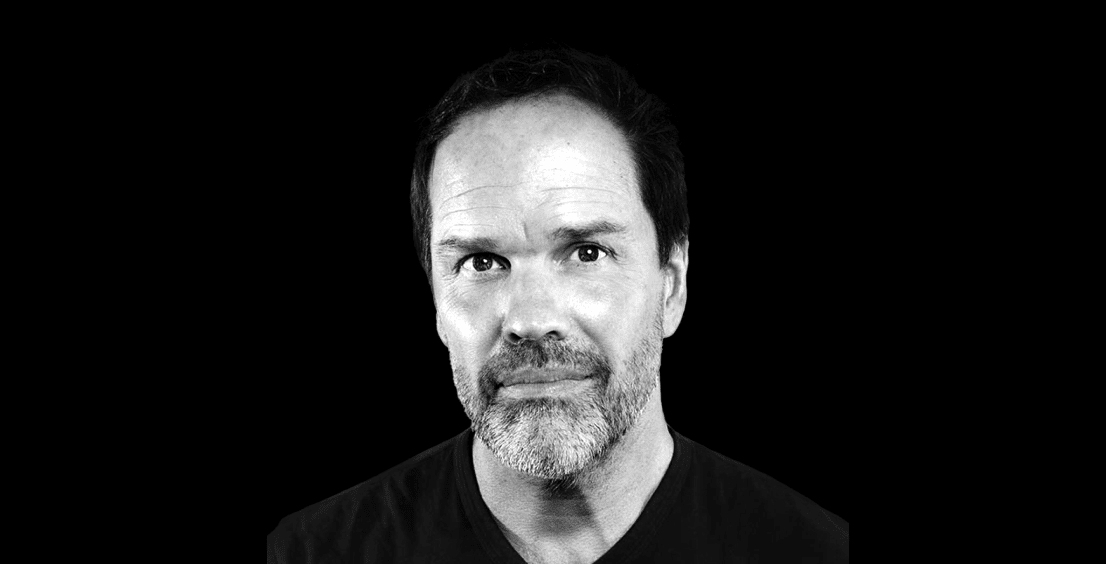From Cable To Creators: Today’s Media Landscape With Evan Shapiro
Evan Shapiro
Owner + Cartographer at ESHAP

Evan Shapiro shares how big tech companies are redrawing the boundaries of the media sector. This episode covers today’s seismic shifts, from the rise and impact of tech giants to the strategic use of data in marketing.
The episode explores how brands must adjust to changing consumer behaviors, highlighting the essential shift from reach to meaningful engagement.
“Buying media on impressions is very quaint. It’s adorable. It’s very 2000.”
They discuss using first-party data and machine learning to craft personalized messages that hit home. Plus, insist on measuring marketing success through actual sales, not just exposure.
“We’re moving from advertising that is predominantly built around hearts and minds to one almost exclusively built around hearts and carts.”
With a wealth of knowledge on impact over impressions and investing in data-driven decision-making, this is an episode that marketers, media professionals and tech leaders won’t want to miss.
Topics From This Episode:
- Decline of traditional media
- Big tech media takeover
- Future of video advertising
- Measuring outcomes versus reach
- Audience targeting
- Data and measurement
- The creator economy
- Marketing and mobile gaming
Watch the Live Recording
Tessa Burg: Hello, and welcome to another episode of Leader Generation, brought to you by Mod Op. I’m your host, Tessa Burg, and today I am joined by Evan Shapiro and we are going to dive deep into what’s happening in the world of media. Evan, thank you for joining us. I’m excited to have this conversation. As we talked about before we got on, this is very far from my area of expertise of topics I get to explore, so this should be an interesting conversation.
Evan Shapiro: Thanks for having me.
Tessa Burg: So, Evan, you are referred to as the Media Universe cartographer. Tell us a little bit, what does that mean?
Evan Shapiro: So right now, I run a, what I call a change agency, and we provide basically insights as a service. I write about the media every day on LinkedIn. I also write a Substack newsletter called Media War & Peace. And there, I pontificate on the shifts inside the media universe. This all started when I decided to create a map of the media universe, including companies like Apple and Microsoft and Meta and Alphabet, and now Nvidia. And the X axis of the map is the market valuations of these companies. So, it’s publicly available, usually driven by public markets, sometimes by reported valuations, but it’s math. And you’ll see Microsoft, which is now the most valuable company in the world there, and it’s $3 trillion valuation sitting next to companies like Disney and Comcast. And when I first dropped the map, a lot of people it got picked up by Deadline. And a lot of people said, comparing companies like Apple and Google to companies like Paramount, or at the time it was called Viacom and Fox and Disney, you know, where the big tech companies make most of their money and all of their profit from hardware or software and or search, and they dabble in media. Whereas the media companies get all their valuation and all of their profit from media and entertainment is not a fair comparison. You should try to section off just the media enterprises of the big tech companies and compare those. And my answer was, life is not fair. The map which first started in 2020 was not meant just to compare these big tech companies to the media companies, to the traditional media companies, but to basically show with math that big tech had already taken over media and that the new era of media was going to be one dominated by big tech who are infiltrating other markets like audio. YouTube’s the biggest music platform on the face of the earth. As much as Spotify likes to scream about itself, video and gaming. Microsoft is one of the largest gaming companies on earth, but it’s not the center of their enterprise. They’re going to do that with profits and revenues from things like Office and iPhones and search to basically take over the media sectors, which they believe are vital for keeping consumers in their ecosystem as long as they possibly can to get the greatest amount of value in the attention economy, in the ad economy and the subscription economy. So that first map is where the title came from, but now it really describes, you know, the charting of the media universe and where it’s going in real time based on a tremendous amount of research and data that we ingest on an ongoing basis. We just dropped the latest version of the map yesterday and it shows, you know, some massive trends in it that I think are not, these are not things that are going to happen, these are things that are happening. So, for example, yesterday we announced Apple is out of ideas and you can look at their trajectory over the last six months, and I think it’s pretty clear. We announced that sports is not a bubble, but it is still a boon and that it will be a boon for some time. You know, look at the valuations of Major League Baseball and the NBA and the NHL and TKO, which is the spinoff from Endeavor that is WWE and UFC. And they’ve all grown their value, the average value of a team in Major League Baseball, NHL, and the NBA have all gone up, in case of the NBA, it’s gone up 30 plus percent. And that’s because of rights. It’s not because the games are better, the games aren’t better. Actually, one would argue the games are worse, but because sports is such a key element of the subscription and advertising economy, there’s absolutely no way that Disney and Warner Brothers are going to let those rights go. And in fact, there’s been reporting that the rights package that the two of them signed for the next contract on NBA rights, which starts next year, will go up two and a half times, if not more, two and a half times.
Tessa Burg: Yeah.
Evan Shapiro: It’s insane.
Tessa Burg: Yeah,
Evan Shapiro: And this is true, like if you look at the deal that Apple made with Major League Soccer, and you look at the deal that, you know, Disney did with F1, and you look at the deal that Amazon did with the NFL and you look at the individual game rights that Peacock is paying for playoff games, a hundred million dollars a game. You know, television has in large part become a waiting period between major live sporting events. And this as true in Europe as it is in the United States. This is as true in Asia. Cricket is a religion in parts of the world. Reliance is getting 55 million concurrent streams, streams for cricket games in the IPL championship in India. So, these are not isolated incidents. This is a trend, and it is present and we’re going to watch it play out in real time. And then the last trend we pointed out was that traditional media is dead. It’s you know, it is not on life support, it’s on a machine keeping it alive called the revenues from its legacy businesses. And it has not figured out where it’s going, and it hasn’t figured out that it’s over.
Tessa Burg: So, there’s a lot to unpack in these trends. It’s really big. And you’ve been tracking this since 2020. What kind of prompted you to create this map? And is there a danger in the tech companies starting to take over the media landscape?
Evan Shapiro: I’ve actually been tracking it for a lot longer than that. It’s just that I did it inside companies until 2020 and then I, you know, actually until 2017 and then I started doing it externally and then the map kind of illuminated everything. You know, I’ve always tried to make decisions based on data. In 2012, so this is 12 years ago, I wrote an article called TV and Intervention where I predicted that by 2025, 40% of the cable universe will have disappeared. The only thing I was wrong about is that it came earlier than I predicted. We are now at 60% of the cable universe that we had in 2012, and it’s 2024. And this was true last year. So it was, I was two years too, too short, too long. And that was based on data, it was based on a ton of data, and everyone called me crazy. Everyone said I was nuts. So, I’ve been doing this for some time, and now more so than ever, I let the data tell the story and then I just put words around it. It’s very difficult to argue with math. People try all the time, but facts are stubborn things. Is there a danger in big tech taking over media? No, there isn’t. You know, there was a danger when kingdoms ran media and paid painters and writers to write shit, there was a danger when the church controlled the media and told painters what to paint and sculptors what to sculpt. There was a danger when six companies ran 90% of the intellectual property on earth in the 80s and 90s and early aughts. You know, we have oligarchs in media, we always have, I think we always will. And I don’t see, there are anti-competitive practices in big tech that worry me, but there were anti-competitive practices in the last set of oligarchs that just troubled me just as much. So, you know, and in fact, my problem with the last set of, you know, the last oligopoly was that they very much limited voice, whereas big tech seems agnostic to voice. Yes, the algorithms do skew here one way or another here or there, but that’s based on, you know, just innate white guy bias that’s inside the c-suites of tech and media for a long time. So that’s not necessarily malicious or purposeful, it’s just what happens when you keep hiring the same people from the same eight Ivy League schools over and over again, which we need to change, but this is not a new problem. You know, I think the thing that people fail to realize is that the golden era of television was supported not by the revenues of television directly, but by the revenues of the ecosystem in which television and film lived. Comcast and all the rest of the cable companies stopped profiting on video in the late 90s. It became a breakeven proposition from 2000 forward, and now it’s a loss leader and it’s a loss leader around a very profitable product. Even to this day, the triple play combination of phone, broadband and video is a very, very, very profitable product. It is disappearing very quickly, but it has been a profitable product for a very long time. The profit was generated by the accidental revenue streams of broadband and telephone that were the byproducts of building out the pipe to deliver television. So, they dug all these holes, they put in this pipe that allowed high definition and then 4K. And in doing so, they invented the broadband internet. They allowed for voiceover internet. And as a result, those products are almost pure profit. And so, the pure profit generated by telephony and broadband was what allowed them to irrationally overpay for ESPN and USA and Bravo and Fox and CNN and that’s where the massive profits came from in publishing. It was not sustainable. They should have known it was not sustainable. In 2012, I wrote that it was not sustainable, and they should have rather than selling their best product to Netflix and allowing the Huns to destroy them. They should have invested in their own system of streaming, and they could have, they could have headed off the disintegration of the cable bundle at the pass. They did not do that. And now with the triple bundle disintegrating, finally after a long time, the profits are disappearing from the publishing, the great media entertainment industrial complex. But the triple play is still a great idea. It’s now just called Amazon Prime. Amazon Prime is the same product with different levers. So instead of telephony, you’re getting home delivery and, you know, you get all this bundle of products and it’s the one subscription. Nobody cancels. Nobody cancels. They’ll raise the price, they’ll add ads and consumers will bitch, but no one cancels it. It’s too ingrained into our lifestyle, just like the triple play used to be. It’s my broadband, it’s my telephone number, it’s my email address, I can’t break up with it. All my records are there. So, you know, that’s the new bundle and that’s the new product. And that’s the kind of product that big tech is so much better situated to deliver than anyone else, except you see Walmart buying Vizio and you imagine a future whereby other companies get into this game as well. But video is a standalone product, audio is a standalone product, is not as good a business, and it hasn’t been for a very long time. And so, the idea that a Spotify, which has never been profitable can compete against Apple, Amazon, and Google, three of the most valuable companies that have ever existed is bonkers. The idea that Disney and even Netflix can compete against Amazon and Google and let’s say Microsoft when they decide to get into the video business, who can offer these suites of services and profit from other areas while they have to try to figure out a model that hasn’t really worked except for these irrational fees that they were being paid for other reasons is not smart.
Tessa Burg: Yeah. So, I remember in 2012, you’re absolutely right, I would’ve predicted later ’cause it felt like you had to have cable and now you feel like you have to have Prime. And in the space that we’re working, we are trying to get our clients’ messages out to consumers. And of course we’re using that media landscape to do it. And it has definitely required more versions, different types of experiences depending on where it’s being delivered. What do marketers and specifically brands need to know about what’s coming next when they think about what’s the best way to reach people when there’s all of this very dynamic change happening?
Evan Shapiro: Well, first of all, you have to yes and, right? You can’t pick and choose. So that’s thing number one. Thing number two is while content remains king, you know, data is now the bloodline. And so, the quality of your own first party data and your ability to co-mingle that with first party data from advertising agencies, platforms, and publishers will help you determine who are the best consumers to reach, where to reach them, how often to reach them, and how it did at the end. How to measure success. You know, buying media on impressions is very quaint. It’s adorable. It’s very 2000, 2010 and I don’t know why anybody does it anymore. You should be buying based on the potential outcomes because at the end of the day, whether it’s a brand campaign or a performance-based campaign, what you want is to reach the right consumers at the right time per the appropriate number of messages. Overreaching a consumer has the opposite effect that you intended. And then you need to measure the outcome. So, in a brand campaign, did they watch the full commercial? That can be a brand campaign, but it can also be a performance campaign. Did they get a better impression of the product and the brand on the other side? That is something you should at least attempt to measure. It’s harder than did they watch the whole commercial or did they, you know, send me an email. But it’s accomplishable. And then on the other side, when you’re really just selling products, let’s be honest, the number of people you reach is inconsequential. The number of products you sell is consequential. It’s the whole game. So, we’re moving from a game in advertising that is, you know, predominantly built around hearts and minds to one that is going to be almost exclusively built around hearts and carts. Cans and hands, butts and trucks, heads in beds. This is what we care about when we’re a hotel or a destination product and we need to book, we want to know how many people we reached, showed up and slept in one of our rooms or got on one of our cruises. That’s all we care about. And so, spend more money upfront determining who your most likely buyers are, target them, make sure you’re not overreaching them, and then measure the effectiveness of your campaign on outcomes not reach. That to me is where we should be. It’s where we are, it’s where the best buyers are. It’s where the smallest buyers are. 60% of all money spent on video goes to YouTube. And the reason for that is it is infinitely measurable despite the massive fraud on Meta and Google. I mean massive, like, let’s call it 40% of all media spent on those two platforms is just pure bot driven fraud. And yet when a dry cleaner or a hardware store in Ottumwa, Iowa, you know, puts a thousand dollars campaign down, they know exactly how much foot traffic they got as a result of that. They can see the outcome. You know, the auto dealers can tell based on appointments that they get to test drive cars. That’s why small advertisers buy exclusively on social and very rarely on cable because they can measure the outcomes. And so, you really do want to make sure that you’re buying for the time in the moment and not doing yourself a great disservice and wasting most of your money. The John Wanamaker quote, I know half my marketing money is being wasted, I just don’t know which half that’s from like the 19 teens and we’re still quoting it today. There is no rational reason. There’s no rationale for thinking that half of your marketing money is being wasted right now.
Tessa Burg: Yeah. I think that you’re asking marketers and brands to make a massive mental shift and even in the past, so I came into marketing through an obsession with data and I always found it so challenging to show and communicate the value of quality over quantity. Like even if you can show all the logic behind it, there’s this emotional pull that people feel that they just have to have to reach more people. And that if more people know they will take an action instead of understanding that what’s front and center for me is a consumer is my life. And if you aren’t hitting me with a message about your product that solves a challenge that’s deep to my life at the moment when that challenge is top of mind for me, then it’s wasted. But there’s this mentality that, well if we just like awareness is almost overvalued, not almost overvalued. Awareness is extremely overvalued. Instead of taking the money and investing upfront and looking at who do I already have, really understanding them, having true data personas that are alive and evolving as opposed to I did it once and three years later I really stick to these. It’s a really big ask and like I will say not a conversation I think I’ve had successfully because like we still see a lot of people just really wanting to be everywhere all at once and going for impressions.
Evan Shapiro: Well, but that’s going to become a competitive disadvantage over time because there are smart marketers out there.
Tessa Burg: Oh yeah.
Evan Shapiro: And they know how to do it and chances are some of them are your competitors. Who cares if I know the absorbed, you know, the absorbing power of Pampers. I haven’t bought a diaper in 25 years.
Tessa Burg: Yep.
Evan Shapiro: It’s just a, it’s just a wasted impression. You know, you buy an ad on the Today Show on NBC and you have absolutely no idea how many people who saw that ad will buy a product. You buy that same ad inside the Today Show on YouTube TV and Hulu Live and all the other virtual linear products where you can buy that, which is a high number and you’re going to reach substantially fewer people. But on the way in the door you’re going to say, I really just want to place these ads in areas and to people who are in the market for this product. And then I want to measure whether or not it’s effective. Yeah, you’re going to spend way more per thousand eyeballs, right. But you’re going to waste a fraction of what you would’ve wasted on the broadcast product and you’re going to know whether or not it worked. A, the spend will be less in general, the spend per person will be higher, but the spend per dollar returned in actual purchases is going to be specific number in the latter example and a piece of guesswork on the former, you know, I’d rather throw a big rock in a pond where I know I can make waves than a pebble into the ocean where I don’t make our ripple.
Tessa Burg: Yeah, I love that analogy. And it’s one thing you said, there’s a lot of smart marketers. I totally agree. And sometimes, you know, when it feels like people are managing everything on emotion and not logic, it like drives me absolutely nuts. But I will say this is where AI machine learning have played a massive role and you have to sort of let go of how you used to do things and understand that as the machine is getting trained, the outcomes that it’s predicting are something you could not have realized on your own. Like, you know, and we’ve seen smart marketers have an aha moment as opposed to like a contentious moment and be like, oh my gosh, we should totally be more on, I mean YouTube is a great example and sometimes it gets tossed out of a plan because it can’t be managed through, you know, a massive platform in all the same way. But who cares? If that is where your customers are at, it doesn’t mean perfect measurement shouldn’t be the thing that blocks progress and it shouldn’t be the thing that blocks putting your message where you know your audience is, and again–
Evan Shapiro: And honestly, if you are not happy spending as much money as you’re likely being recommended to on YouTube and Meta and Amazon, invest in your own first party data infrastructure and then you’ll be able to go other places and be just as effective there as you are on those three platforms. It is incumbent on the client to, and by the way, IAB just did a study, you know, last month and 71% of brands, agencies and marketers are now investing, and publishers are now investing in their own first party data infrastructure, that’s up from 41% just two years ago. So, this is the way it’s moving. And if you don’t want to be left behind, look, I’m sure riding a horse was super fun, but when your editor starts delivering their products by it via truck, like are you just, are you going to just stick with it? ‘Cause the horse smells like work. That’s exactly, you have a lot of people still buying linear broadcast for that reason because they have this romantic sense of massive reach, which doesn’t exist anymore, let’s be honest, except in the Super Bowl, you know, and then you’re talking about $5 million a spot, right? Or, you know, in Thursday Night Football, which is now on Amazon, you know, which is a pure digital product or on Sunday night football on NBC, which again is still 5, 6, 7, $800,000 a spot. So great if you want to do that kind of reach. But again, who’s seeing it and what are they doing once they’ve seen that spot?
Tessa Burg: And is it that want for massive reach that’s making the rights around sports so valuable is that I think a lot of sports are starting to attract a more diverse audience, more eyeballs. And so, advertisers are like, we got to be in that space and those rights are now–
Evan Shapiro: I think one of it is part, a big part of it is that it’s live and so ads aren’t skipped, and you can kind of, you can create a conversation in a playoff game and just a pause here. So, the women’s finals had 16 million viewers. The men is the Final Four. Women’s finals had 16 million viewers. The men’s finals had somewhere around 10 or 11 million and the women’s finals were, had 90% of the advertising of the men’s finals. So just pause on that for a second. So, there are these new sports coming up. You know, football meaning soccer is going to be a massive, it is going to take off finally in the US now that Messi is here and a bunch of other players are coming over, but also the Women’s World Cup is happening, is helping with that. And as will the Men’s World Cup coming here in a couple of years, cricket is coming to the United States, the Cricket World’s Cup this year. While that won’t be a massive sport in the US, there are 12 million Southeast Asians who will all watch that at the same time, very, I don’t want to generalize, but traditionally wealthy, high expendable income households, highly educated, very influential, you know, there’s opportunity there, women’s sports as demonstrated by the Final four and last year’s WNBA Finals. And the fact that Caitlin Clark went on SNL this weekend and cut Michael Che down the size, and it was the most watched clip from the show this weekend. So, like there is, there’s opportunity in sport, but there’s also opportunity in emerging sport as well. But so, it’s the live nature of it, is part of it. And then there’s the culty nature of it as well. As big as football is, and let’s put the Super Bowl aside, you know, the largest games of the NFL, which were the most watched linear television events of the year by far in the US there’s still, you know, 23, 24 million people, which is still relative to the entire population, less than 10%. So, these are not, these are still pretty niche products even though they are mass by, you know, just by point of comparison. And in 1972, All in the Family got 67 million people to watch every single week, 22 weeks. Relative to our historical precedent. Football is a relatively niche product these days. And that’s kind of the point is it they’re cults, you know, so you have a loyal fan base who will overpay to watch, whether that’s on Amazon or ESPN or DAZN or you know, Turner or TBS or you know, wherever, NBC. And so, you know, the Peacock game, which got 23 million people to watch on Peacock, which is not a service many people used up until that point, demonstrates the power that sport brings to a publisher.
Tessa Burg: Yeah. And I think the key to success too, if you are going to spend in sports and live events, is pairing that with the first party data strategy because it’s a great way to capitalize on what will become cultural moments like Caitlyn Clark going on. SNL was definitely a cultural moment. I was smiling from ear to ear during that segment as a female soccer player. I’ve been waiting for soccer to become big in the United States my whole life. And so, to see it happening in basketball really, and the games were so entertaining and you had like this point of pride that–
Evan Shapiro: It’s almost as if they know how to play basketball too.
Tessa Burg: I know. Yeah. Who knew? Who knew?
Evan Shapiro: Just one other point I would make on what advertisers should do. So, you know, the gatekeeper, the gatekeeper entertainment economy is contracting and it’s not just contracting, it’s becoming less interesting. So, Netflix announced today that they’re going to make less, fewer auteur-based films and much more, many more, or actually fewer, but much more mass targeted products, right? So, you know, Amazon a couple of years ago was super into independent in films and documentary, now they’re making Roadhouse, you know, so the corporate media economy is going to get more and more vanilla straight down the middle, you know, mass oriented. And the indie voices shows like Fleabag and Portlandia and even shows like Mad Men and BoJack Horseman are going to become absent from those platforms, but still on the big tech platforms, still on the big tech infrastructure, the creator economy is going to start offering and is now offering that work in a different form. And brands who isolate their media spends and their efforts in marketing only to the gatekeeper corporate media industrial complex are going to lose most of their audience and they’re going to lose the opportunity to build passion around their brand. However, brands who invest heavily in the creator economy and in creators, and by that I don’t mean influencers, fine influencer marketing is effective, keep doing it, don’t stop. But there’s a much larger ecosystem in the creator economy that includes podcasters, that includes comedians, that includes substack, that includes long form beautiful content on YouTube, that involves all of these musicians and poets and writers and directors on TikTok, on YouTube, on Instagram. The Duolingo TikTok is one of the best feeds I’ve found on the internet. Funny, inventive, different. They don’t pay TikTok for that. That’s not an ad. They start it, they pay for it, they pay talent to make it, but it has like 7 million followers, and they’re rabid. They love it. The Washington Post TikTok, very entertaining, very effective. The Chipotle TikTok, the Levi’s TikTok, the Crocs TikTok, all really good brand produced content feeds, not ads, but content feeds. Brands who lean into the community economy as I call it, or the creator economy as most others do, and can build a passionate relationship between them and the consumers they’re trying to reach. Those will be the successful brands over the next decade. The ones who do not, will not. And you’re going to see a shift in brand loyalty based on that.
Tessa Burg: Yeah. And it’s though the community economy, the creator economies has those emotional ties to their audience and not probably, but the best way to learn where that content comes from is to uncover those truths from that first party data and keep the conversation going. I think that brands, when you look at mass media and pushing things out, you’re not creating a conversation where if you’re creating the cult, it’s because you’re doing it in service of and facilitating and fostering that emotional connection with the audience.
Evan Shapiro: Yes, that’s exactly right.
Tessa Burg: This has been a wildly interesting conversation Evan, and thank you so much for coming on today. Lots of nuggets that our listeners can walk away with and start to be inspired how to look at their data, how to use their data to start creating new experiences in communities. Are we missing anything? Are there any, anything else about the map that was just released yesterday? And for a point of reference we’re recording on April 15th, 2024. So yesterday was April 14th, 2024. What else, or what other nuggets should we touch on before we end today?
Evan Shapiro: What other points that should we touch on? It’s a great question. I think I hit, you know, almost all of the ones I would say, I mean also, look, if you’re an advertiser or an agency or a brand, ask yourself this. Do you play Wordle? Do you game on your phone? And if you do, you’re a gamer. And most Americans, in fact, most people on the planet are gamers and most of that gaming is on phones in what people call casual gaming, puzzles. Those Candy Crush, Wordle, the New York Times is now one of the most important gaming companies on the planet.
Tessa Burg: Yeah, that is so weird to think about.
Evan Shapiro: And most of the revenue in mobile gaming comes from advertising. So if you’re looking for an effective uncluttered highly engaged audience environment, mobile gaming is probably one of those areas that you should be looking at really, really hard. It is, it is one of, first of all, advertising in all gaming mobile console, otherwise is going to explode. It’s probably gonna be one of the fastest growing segments of the ad economy. It’s still very immature, which means the real estate is, you know, relatively unspoiled, especially for big brands. And so the opportunity to go there and have meaningful impact very, very quickly is, is tremendous to be blunt. And so I think, you know, you have an opportunity there. And by the way, it goes back to the first party data. It goes back to everything that we just talked about with regards to the efficacy and measurability of your ads. It’s incredibly measurable. One click away from getting an action taken, you know, and one click away on the device that consumers on the planet are used more than any other device. It is the remote control of their lives. And so to me, if you’re looking for, when I was a marketer, which I’m a recovering marketer now, when I was a marketer, you know, I always looked for the real estate no one else had. At one point when I was doing marketing for the public theater, we wrapped 300 water towers, you know, the towers on top of buildings in New York, and it made the news because like, what the fuck? So, you know, we would do, we would do chalk drawings, semi-permanent chalk drawings on the sidewalks because like, holy crap, like big ones, you know, we would, we did, we were early on in the wild posting, so we were always looking for real estate that stood out by the fact nobody else was touching it yet. To me, gaming is that now. And if you’re a brand or an agency or a marketer and you’re really looking to make waves with a valuable audience, which is much older, I mean, I don’t mean old, but like, a mobile gaming audience is a 25 to 54, majority female audience. Not kids in the basement, you know, in their mom’s basement shooting other people. So it is a very valuable and relatively, you know, untouched audience compared to let’s say television or other areas. And if you’re doing broadcast and if you are big brand, mainstream product, packaged good or service to the home, and you want to hit the decider in the home on a regular basis in a way that is measurable and you’re buying broadcast TV and you’re not buying mobile gaming, you are fucking yourself.
Tessa Burg: I love big bold statements. Evan, thanks so much for being a guest. If people want to follow you and hear more about the changing media landscape, where can they find you?
Evan Shapiro: LinkedIn is my best platform. And then I have aa newsletter called Media War & Peace that if you Google Media War & Peace, it will come up. So yeah, happy to be here. Thanks so much.
Tessa Burg: Awesome. And thanks everyone for listening. You can find more Leader Generation podcasts on ModOp.com or wherever you listen to podcasts.
Evan Shapiro
Owner + Cartographer at ESHAP

Many know Evan Shapiro as the official, unofficial cartographer of the Media Universe. Using a very specific point of view, Shapiro has mapped the tech and entertainment ecosystem, and, through his essays on the Media War & Peace Newsletter, he helps chart Media’s future.
Shapiro is also an Emmy and Peabody Award winning producer of many funny things, including Portlandia, This Film Is Not Yet Rated, Please Like Me, Comedy Bang Bang, Brick City and Harmonquest.
He is also a professor at NYU and Fordham schools of business, as well as the co-host of the Cancel Culture Podcast. Shapiro uses his insights to power his change agency, ESHAP, which offers partners and consumers media insight as a service. Be sure to follow Evan on LinkedIn.





